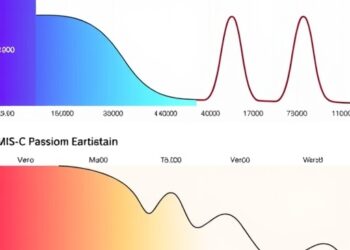A research team at DZNE has been awarded around one million US dollars for the development of an innovative, AI-based method to measure the “choroid plexus” three-dimensionally in human brain scans. These finely branched brain structures are the main sources of the “cerebrospinal fluid” and thus of great significance for the function of the brain and spinal cord. It is also assumed that they play a role in various neurological diseases, including Alzheimer’s. The research project is funded by the US National Institutes of Health (NIH).
A research team at DZNE has been awarded around one million US dollars for the development of an innovative, AI-based method to measure the “choroid plexus” three-dimensionally in human brain scans. These finely branched brain structures are the main sources of the “cerebrospinal fluid” and thus of great significance for the function of the brain and spinal cord. It is also assumed that they play a role in various neurological diseases, including Alzheimer’s. The research project is funded by the US National Institutes of Health (NIH).
The “cerebrospinal fluid” (CSF) is a watery liquid that circulates in the brain and spinal cord. It carries nutrients and metabolic products, dampens shocks and largely originates from cavities deep inside the brain. The actual “springs” are complexly shaped appendages of the brain tissue that protrude into these cavities and the cerebrospinal fluid they contain. “Choroid plexus” is the technical term for the elongated, highly branched structures that produce the CSF. Every individual has four of them, some of which are interconnected. At the same time, these structures are relatively small; in adults they have a total volume similar to that of a sugar cube. “Such delicate brain structures are difficult to capture in living humans. That’s why we want to develop an AI-supported method that automatically identifies the choroid plexuses in brain scans so that their shape and dimensions can be precisely determined,” explains Prof. Martin Reuter, an expert in AI in image analysis and research group leader at DZNE. “Automated and precise measurements of these structures will help to better understand disease processes and normal brain changes over the course of life.”
Digital “dissection” of the brain
For this undertaking, the Bonn scientist and his team will draw on three-dimensional brain magnetic resonance images (MRI). This wil involve data from the NIH’s “Human Connectome Project” and from other sources. In total, data from around 700 participants will be included. Although computer algorithms exist in principle for the intended separation of the brain images into different areas – experts call this “segmentation” – they are too inaccurate for the choroid plexuses. “For these complicated brain structures, you need a specialized, fully automatic tool. We don’t have that in good quality yet. And segmentation by hand, where one marks the contours of the relevant tissue on the screen with a mouse click, is laborious and prone to errors,” says Reuter. “That’s why we aim to develop a method that can be used to efficiently and reliably evaluate large brain MRI data sets. Just as is required for studies with a large number of participants. These could be drug trials or studies on ageing, for example, such as the Rhineland Study of the DZNE here in Bonn.”
Five-year runtime
In this project, DZNE will cooperate closely with US institutions, in particular with the “Beth Israel Deaconess Medical Center” in Boston, a Harvard Medical School affiliate. At the end, a software based on advanced artificial intelligence shall be available that has “learned” through examples – so-called training data – to recognize the “springs of CSF” in MRI data. The development of the necessary algorithms, and their training and validation, are labor-intensive efforts. Already the selection and creation of suitable training data in advance is time-consuming. Therefore, the research project is scheduled for five years. Reuter is hoping for a digital instrument that will be widely used in research: “We are going to design our tool so that it works with data of different resolutions and from different types of brain scanners. We also plan to make the software freely available within the open source FastSurfer project for brain MRI analysis, developed at DZNE.”
—
About the Deutsches Zentrum für Neurodegenerative Erkrankungen, DZNE (German Center for Neurodegenerative Diseases): DZNE is a research institute for neurodegenerative diseases such as Alzheimer’s, Parkinson’s and ALS, which are associated with dementia, movement disorders and other serious health impairments. To date, there are no cures for these diseases, which represent an enormous burden for countless affected individuals, their families, and the healthcare system. The aim of DZNE is to develop novel strategies for prevention, diagnosis, care, as well as treatment, and to transfer them into practice. DZNE comprises ten sites across Germany, it cooperates with universities, university hospitals, research centers and other institutions in Germany and abroad. It is a member of the Helmholtz Association and of the German Centers for Health Research. www.dzne.de/en




